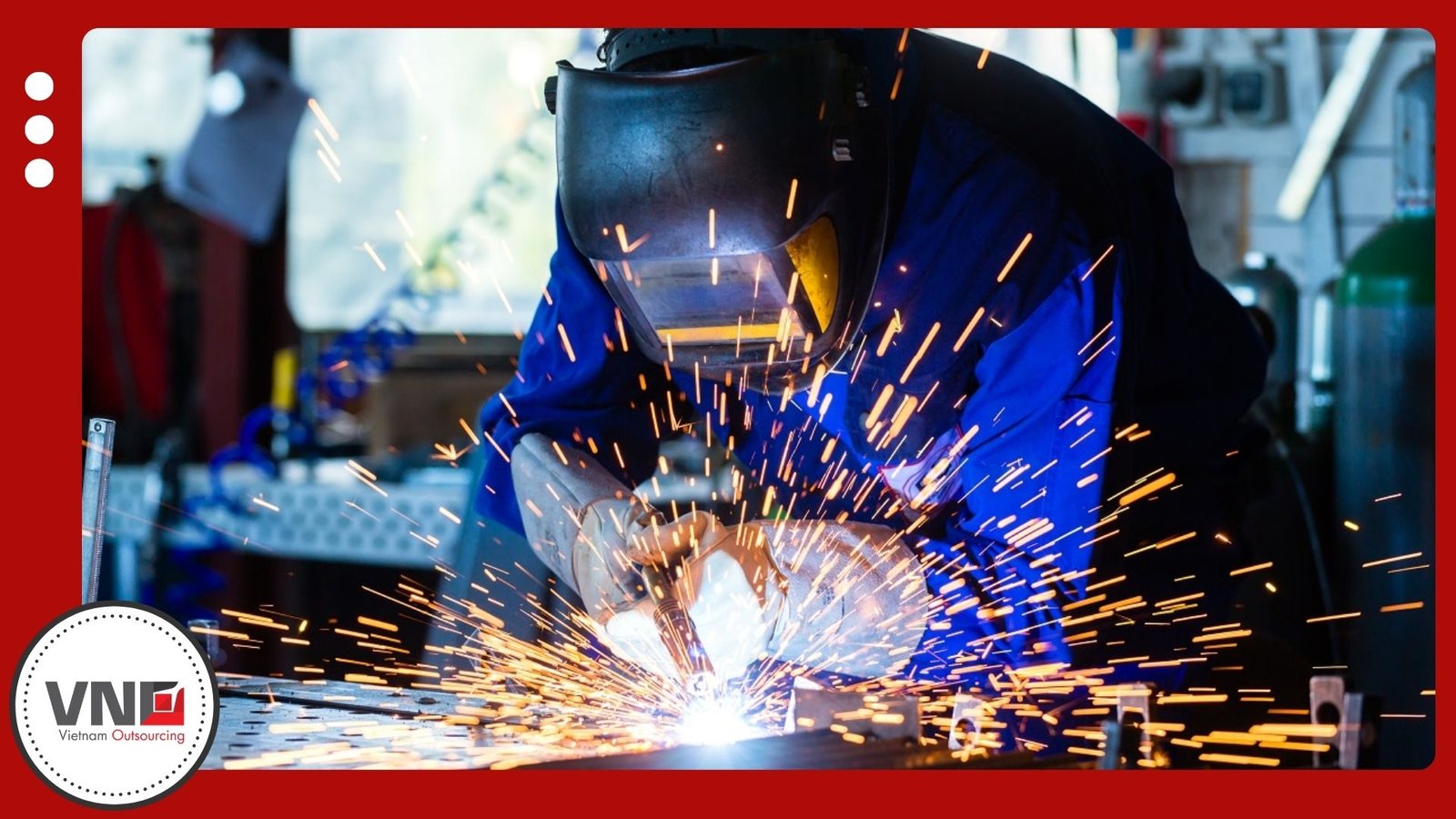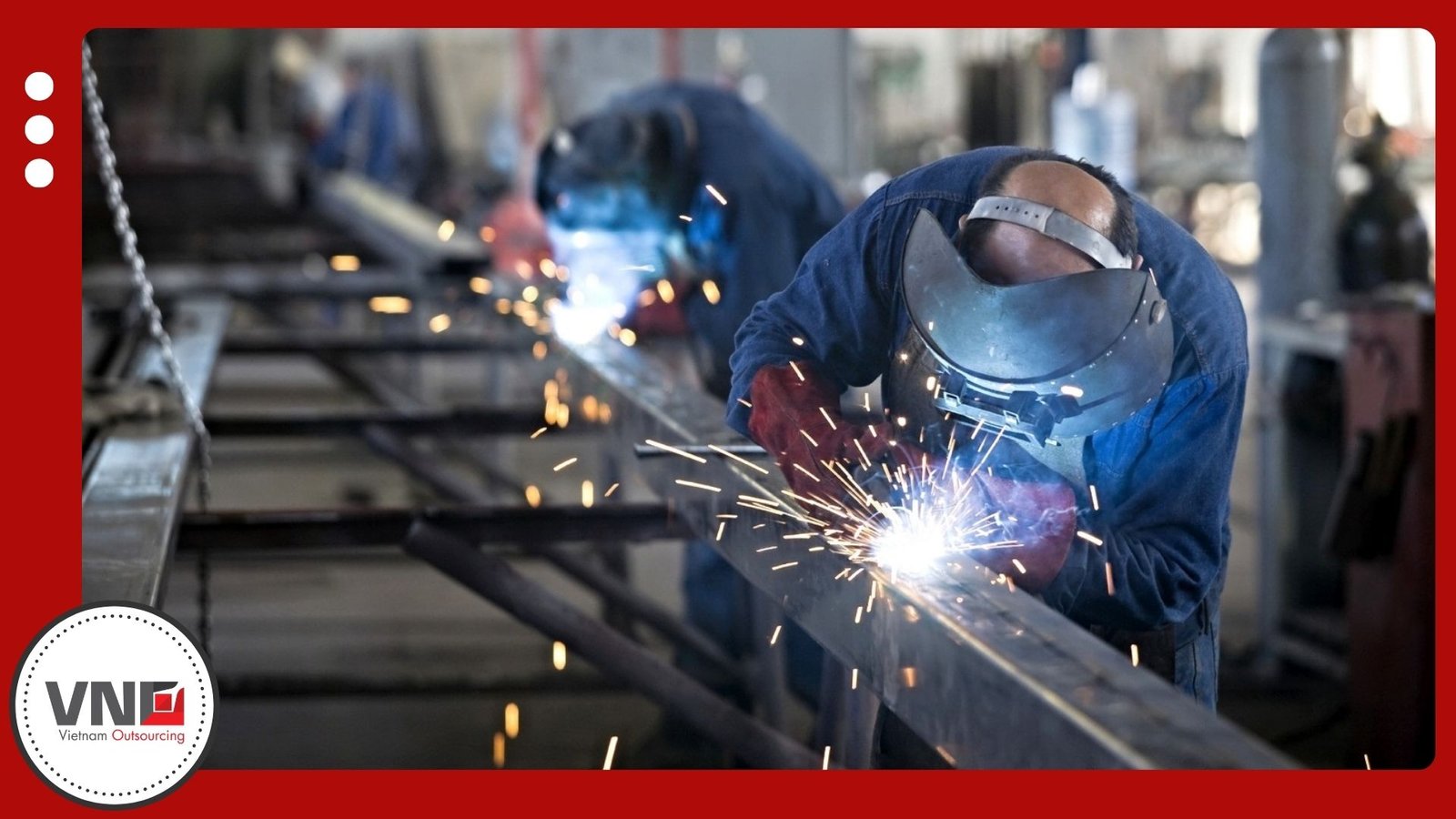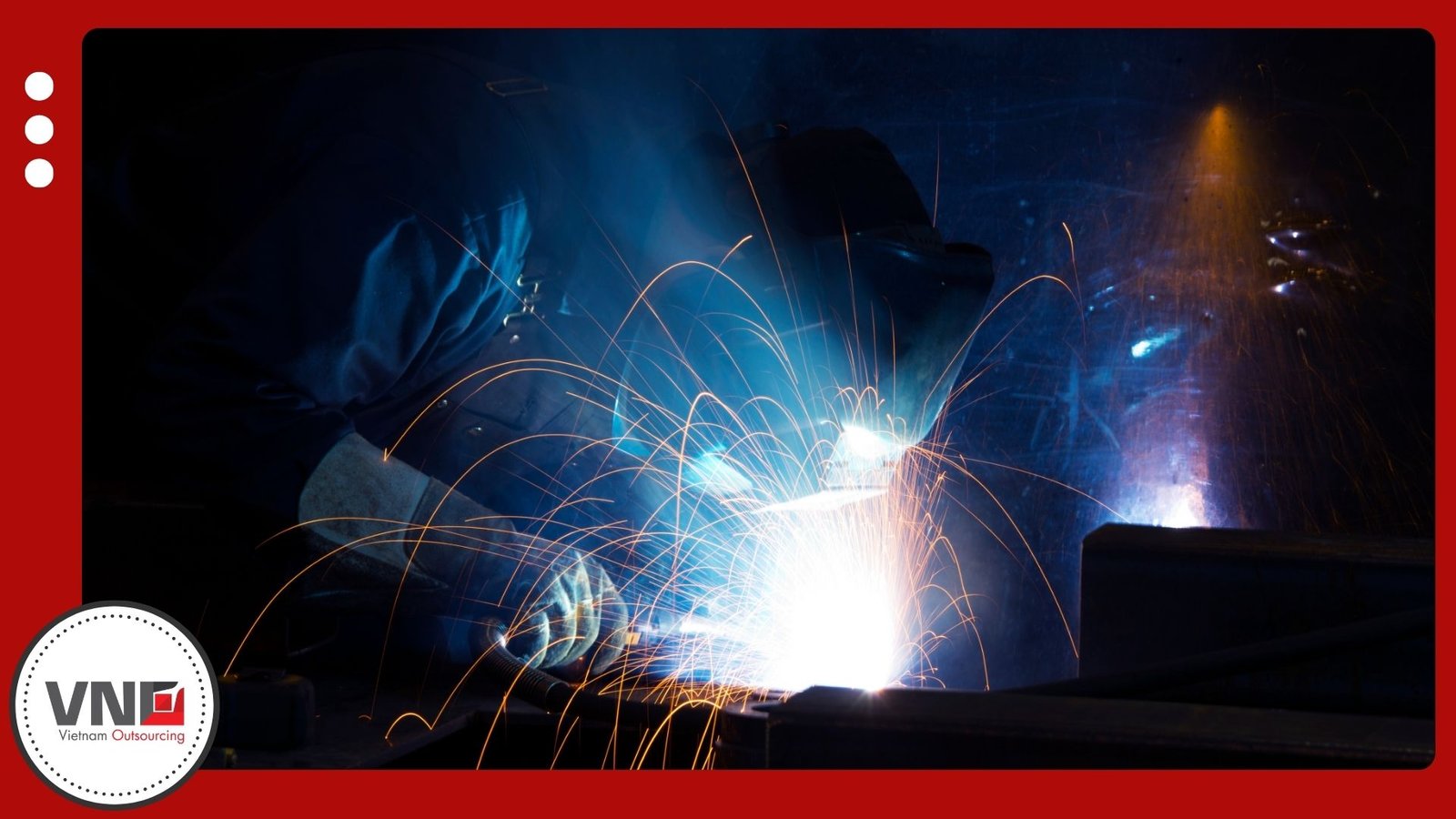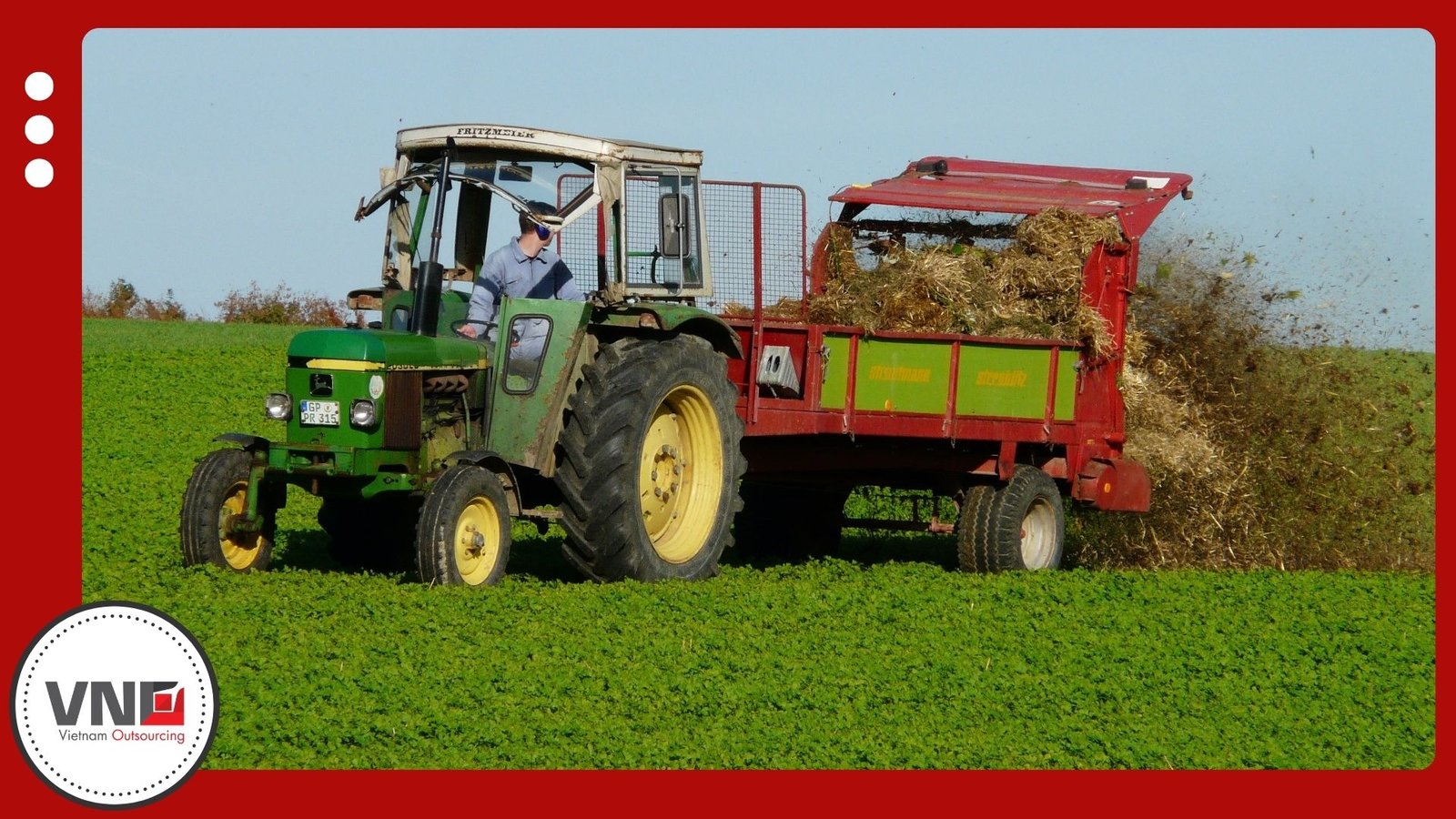What is Metal Fabrication
Metal fabrication involves cutting, welding, bending, machining, and finishing to create steel or metal products. In Vietnam metal fabrication, this covers welded steel assemblies, heavy weldments, and precision sheet metal for industries such as construction, automotive, energy, and shipbuilding.
Why Vietnam is a Leading Metal Fabrication Destination
Cost Advantages
Vietnam offers 20–50% lower fabrication costs compared to Western markets. Outsourcing metal fabrication to Vietnam reduces expenses in labor, assembly, and finishing without lowering quality standards.
Skilled Workforce
The country has a growing base of welders, engineers, and fabricators trained in international methods. Many workshops specialize in welded steel assemblies and heavy weldments, following ISO, AWS, and EN standards.
Infrastructure & Logistics
Vietnam’s industrial parks are located close to major ports such as Hai Phong and Ho Chi Minh City, enabling faster shipping. Ongoing government investment in highways, ports, and power supply continues to improve efficiency for exporters.
Government Policies Supporting Fabrication
The Vietnamese government promotes heavy industry and metalworking through:
- Corporate Income Tax Incentives: priority manufacturing projects may receive tax exemptions for 4 years and reduced tax rates for up to 15 years.
- Free Trade Agreements (FTAs): Vietnam participates in EVFTA (with the EU), CPTPP, and RCEP, giving exporters tariff advantages.
- Industrial Zones and SEZs: fabricators based in export processing zones benefit from reduced land rental, simplified customs, and faster licensing.
- Welding and Safety Regulations: under Decree 44/2016 and updated labor codes, manufacturers must meet strict standards for worker safety, machine inspections, and workplace compliance.
U.S. Tariff Impact
Recently, U.S. tariffs on Vietnamese metal products were adjusted downward. Although the U.S. initially imposed tariffs as high as 46% on some fabricated steel imports, negotiations have reduced these rates to around 20% for many categories. Compared to China, where tariffs often exceed 55%, Vietnam remains a more competitive choice. For U.S. buyers, this makes outsourcing to Vietnam a safer and more cost-effective option while diversifying away from higher-risk supply chains.

Types of Metal Fabrication Services in Vietnam
- Heavy Weldments: frames, tanks, bridges, platforms, and pressure vessels
- Welded Steel Assemblies: sub-assemblies and precision welded parts for construction and machinery
- Sheet Metal Fabrication: laser cutting, stamping, bending, welding, finishing
- Aluminum and Stainless Steel Fabrication: corrosion-resistant and lightweight solutions
- Surface Finishing: galvanizing, powder coating, and protective painting
- Inspection and Testing: non-destructive testing, weld quality checks, and compliance documentation
How to Outsource Metal Fabrication to Vietnam
Steps to Ensure Success
- Define detailed specifications for materials, tolerances, and standards.
- Request prototypes to evaluate workmanship.
- Verify factory certifications such as ISO 9001 or welding qualifications.
- Check the manufacturer’s capacity for heavy weldments.
- Align logistics and customs processes with U.S. or EU import requirements.
Common Challenges and Solutions
- Quality differences: resolved through clear technical drawings and audits.
- Tariff and compliance risks: mitigated by working with suppliers experienced in U.S. and EU export documentation.
- Communication gaps: addressed with bilingual project managers and structured reporting.
Welded Steel Assemblies and Heavy Weldments in Vietnam
Fabricators are equipped with CNC cutting machines, heavy welding stations, and cranes to handle large projects. Welders specialize in MIG, TIG, stick, and submerged arc welding, ensuring strong joints for high-load structures. For export, most companies apply protective finishing to meet corrosion resistance and safety standards.
Hydraulic Press Frames in Vietnam’s Metal Fabrication
Hydraulic presses are a cornerstone of modern metalworking, and their frames form the backbone of these powerful machines. Vietnam has become a competitive source for hydraulic press frames, thanks to its skilled welders, advanced machining facilities, and cost advantages. These frames are engineered to withstand extreme loads while maintaining accuracy and durability.
For buyers exploring industry applications, Vietnam offers diverse solutions, from Industry-Specific Hydraulic Press Solutions to specialized Hydraulic Assembly Press Frames and heavy-duty Hydraulic Forging Press Frames. Together, these capabilities allow international clients to source press frames tailored to automotive, aerospace, construction, and general manufacturing sectors.
At the same time, understanding the wider landscape is essential. For a deeper perspective on market direction, see our analysis of Metal Fabrication in Vietnam – 2025 Outlook, or explore the step-by-step overview in Metal Fabrication Processes in Vietnam: A 2025 Guide. These resources provide context on where hydraulic press frames fit into the broader picture of Vietnam’s metalworking industry.
Cost and Lead Time Comparison
Vietnam offers cost savings and reliable delivery times. For U.S. clients, reduced tariffs make outsourcing metal fabrication to Vietnam more cost-effective than sourcing from China or India. Shipping lead times typically range from three to five weeks, depending on project size.
Sustainability and Compliance
Vietnam is strengthening laws on environmental protection and workplace safety. Manufacturers are required to treat industrial waste, monitor emissions, and comply with labor safety regulations. For international clients, this ensures products are manufactured responsibly and in line with global ESG standards.
Future Outlook
Vietnam’s metal fabrication sector is moving toward higher automation, robotics in welding, and advanced alloys. Combined with tariff advantages, government incentives, and skilled labor, the future looks promising for companies outsourcing fabrication to Vietnam.
Conclusion
The growth of Vietnam metal fabrication is driven by government support, competitive tariffs, and skilled manufacturing. Companies looking to outsource welded steel assemblies to Vietnam or secure reliable partners for heavy weldments can benefit from both cost savings and quality assurance. With careful selection, Vietnam provides a strategic, long-term solution for global supply chains.
Frequently Asked Questions (FAQ) about Vietnam Metal Fabrication
Vietnam offers lower costs, skilled labor, tariff advantages, and reliable welded steel assemblies and heavy weldments.
Factories produce frames, tanks, machinery parts, and other custom welded steel assemblies.
Tariffs dropped from 46% to around 20%, making outsourcing to Vietnam more competitive than China.
Vietnam provides tax breaks, FTAs, and industrial zones that boost the metal fabrication industry.
Yes. Many suppliers specialize in heavy weldments with advanced welding and lifting equipment.
Through ISO/AWS certifications, prototypes, inspections, and non-destructive weld testing.





